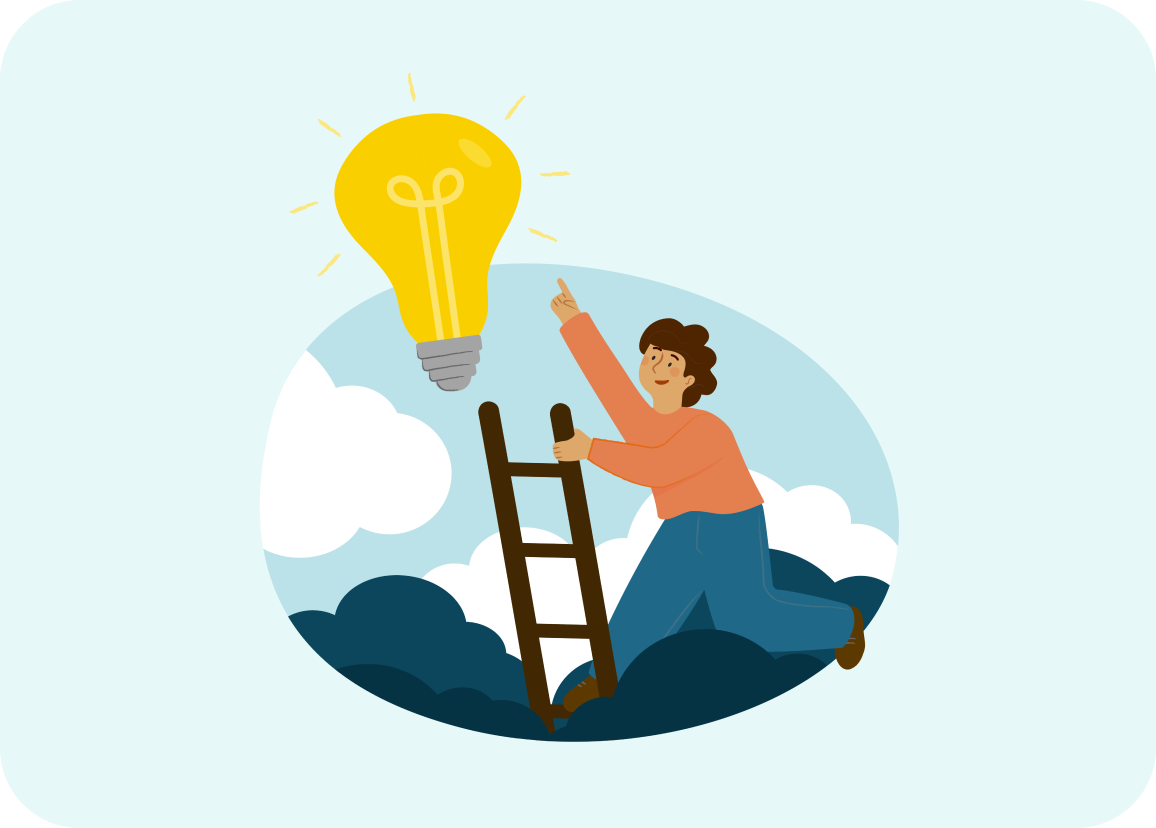A New Approach to the Outdated EAP
Traditional employee assistance programs create barriers to receiving quality mental health care. Today, there's a better way.

In response to an intensifying mental health crisis, 90 percent of employers are increasing their investments in employee mental health. But are they making the most effective choice? Employee assistance programs are historically the first stop, but they’re increasingly not the last.
Plagued with problems like low utilization, limited care options, and poor quality, many organizations are supplementing or replacing their EAP programs with more effective solutions. We’ll look at how employee assistance programs work, consider some of the pros and cons, and explore alternatives to EAPs.
What is an EAP?
EAP stands for employee assistance program. An EAP is a program offered through work that helps employees resolve personal or work-related problems. Most employees use EAPs for mental health disorders such as depression, anxiety, and substance use disorders. Other EAP benefits may include support for:
- Physical health, such as gym memberships, or programs to quit smoking or lose weight
- Family/relationship issues, such as divorce, adoption, or a need for child, elder, or pet care
- Career transitions
- Financial problems and retirement planning
- Professional development
- Legal issues
EAP services are sometimes available to the employee’s immediate family members, as well as the employee.
How do EAP programs work?
Organizations typically offer one to three EAP sessions at no cost to the employee. For employees who need more support, the EAP makes a referral to another resource for more comprehensive care. Employees can start receiving EAP counseling by contacting the program directly, or a friend, colleague, or supervisor may recommend EAP services to the employee. Some of the most common types of EAP plans are:
Fixed-fee contract
Organizations partner with an external, third-party vendor and design an EAP program based on their needs and budget. In a fixed-fee arrangement, employers pay fees based on the number of employees, regardless of their actual EAP usage.
Fee-for-service contract
Companies partner with external service providers, paying only for the specific services their employees use. This EAP model is common among small businesses.
In-house, management-sponsored
Organizations directly employ providers to deliver EAP services onsite. For example, some large companies have a fitness center, daycare, cafeteria, or mental health counselor on the premises.
Internal/external hybrid
Employers pick and choose which services they’ll offer onsite and which they’ll contract out to vendors. For example, a company may offer an internal EAP wellness program that provides healthy meals, and then partner with a vendor for access to a gym. This EAP model allows companies to tailor services to employees’ biggest concerns, while staying within budget.
The cost of EAP programs varies depending on the model chosen, the type of services, and the organization’s size, among other factors. According to the Society for Human Resource Management (SHRM), the average cost of an EAP per employee per month is between 75 cents and $1.50.
Find out how expanding support for employee mental health is an investment that pays off.
What is the purpose of an EAP?
EAP therapy services are designed to help employees cope with stressors and improve their well-being, so they can do their best work. Organizations typically offer an employee assistance program with the goal of realizing the following EAP benefits:
- Increase productivity and engagement
- Reduce absenteeism and presenteeism
- Reduce workplace distress
- Improve employee satisfaction
- Retain top talent
- Reduce health care costs
- Reduce workers’ compensation claims
- Address safety and security issues
- Avoid escalation of mental health challenges into more serious problems
- Help employees return to work quickly after a leave of absence
Most companies are bulking up their employee mental health resources, and for good reason. When employees lack access to needed mental health care, they’re less likely to work effectively and more likely to seek pricey medical care that may not address their needs. Employers bear the financial weight of inadequately treated mental health conditions, often without realizing it. For example:
- People with mental health disorders make six times as many ER visits and four times as many health care claims as the general population.
- Over one-third of disability claims are tied to mental health conditions.
- Untreated mental illness costs $300 billion per year in lost productivity and related costs.
- 50% of millennial and 75% of Generation Z workers left jobs in 2019 due at least in part to mental health reasons
Challenges with EAPs
The need to support workforce mental health is clearer than ever. What isn’t clear is whether a traditional EAP is the right kind of support. Is your employee assistance program solving problems as you intended, or are there hidden barriers and costs to care? Here are some of the challenges many organizations report with their EAP benefits:
Lack of awareness
Nearly all companies (93 percent) offer an employee assistance program, but only about half of workers know it’s available to them. Because EAP services are often bundled with other products and poorly communicated, many employees don’t know they exist or don’t see how the services can help with their specific issues.
Poor utilization
The number of people looking for help with anxiety, depression, and other mental health issues has skyrocketed. Yet only about 4 percent of employees use EAP services. Why wouldn’t employees use a service that is so widely needed? Low EAP utilization rates are partly due to lack of awareness, but there are other factors as well:
- Stigma – The shame associated with needing mental health support can prevent employees from reaching out for EAP counseling services.
- Lack of confidentiality – Some people fear their EAP therapist may share their personal information with company leaders or co-workers.
- Lack of clarity or confidence – Employees may not know what an employee assistance program is or may question its effectiveness. Some people may avoid reaching out because they think they need special permission or a referral in order to use EAP services.
- Difficult to navigate – EAP features can be hard to understand and the process of getting care can be difficult to navigate. With traditional EAPs and even some newer solutions, people have to sift through a long list of providers without any context of their availability or specializations.
Long wait times for appointments
If an employee needs to see a mental health professional, it can take weeks or months to get an appointment. For example, the average national wait time for a first psychiatry appointment is 25 days. While they’re waiting, many people decide to pay out of pocket for care, or give up on treatment altogether.
Limited number of EAP sessions
Generally, the longer a person stays in therapy, the better the outcome. Research shows most people need between 15 and 20 sessions of therapy for their symptoms to improve. However, EAPs provide just 2.5 counseling sessions on average. This can discourage people from starting care. It can also interrupt the recovery process for those who do reach out since they have to start from scratch with a new provider after just a few EAP therapy sessions.
Insufficient service offerings
EAP services are often so broad that they don’t appeal to employees who need support for specific issues. For example, an EAP may offer a counseling session or two but this may not feel like the right fit for someone who needs to see a psychiatrist. As a result, the person may choose to find care elsewhere.
In addition, there are typically large gaps in the type of care employee assistance programs can provide. For example, many do not include:
- Longer term counseling
- Virtual and in-person care options
- Specialized programs for complex issues like substance use disorders or suicidal thoughts or behaviors
- Support for managers
- Specialized care for children and teens
Poor quality
EAP mental health support is often poor quality. There are two main concerns:
1
Care is not based on approaches that are proven effective.
Most employee assistance programs do not require their mental health providers to use evidence-based therapies. These are approaches that have been rigorously tested in randomized controlled trials or a series of case studies and proven to have effective outcomes. There are many mental health therapies available, but only 20 percent are proven to work.
Some providers may have been trained in evidence-based treatments but don’t always practice them as intended. With poor-quality treatment, employees don’t receive the right kind of care for their needs, for the length of time needed to feel better, which makes it difficult to perform their best at work.
In most cases, EAPs aren’t evaluated based on outcomes. In other words, they can claim to provide high-quality care without backing it up with data that shows clients actually got better.
We had no way of knowing if this service was of benefit to our employees, and there was no bar set for provider quality. [Our EAP] couldn’t tell us if our employees were even progressing in care. For all we knew, someone could attend five sessions and get absolutely no benefit from them.
Deborah Olson
Principal benefits manager for U.S. Roche & Genentech
2
EAP mental health providers are not thoroughly vetted and trained.
EAP programs have limited provider networks, which makes it hard for employees to find a provider who is available, a close match for their cultural needs, and specializes in treating their particular condition. Many providers do not accept EAP plans because they typically pay less than commercial plans or private pay. Often, the burden is on the employee to find their own provider, which can be frustrating since many providers don’t return calls, aren’t accepting new clients, or don’t have immediate openings.
With a limited provider network, treatment quality suffers. EAPs typically do not thoroughly vet or train their providers. In addition, they don’t monitor providers to ensure they’re providing high-quality, effective care.
Find out what to look for in a high-quality mental health solution
Wasted spend
Most EAPs follow a per employee, per month (PEPM) payment structure. This means organizations pay a set fee per employee, regardless of how many employees use the EAP plan. In this model, the less the EAP is used, the more profit it makes.
Unfortunately, this structure disincentivizes connecting employees to the care they need, which often ends up costing employers more in higher health care costs, lost productivity, more disability claims, and higher job turnover. Employers have kept EAPs in their benefits packages despite their challenges because they’re relatively inexpensive, but it’s wasted spend if the service isn’t utilized and doesn’t help people get better.
Limited effectiveness
Proving the return on investment (ROI) for an employee assistance program can be challenging. EAPs are not required to validate their effectiveness or results. Most EAP programs don’t participate in peer-reviewed research to prove they help people get better. Few have robust reporting on clinical outcomes, productivity improvements, or health care cost reductions to help employers make a strong business case for choosing an EAP.
“Measuring the usefulness and value of an EAP can prove tricky,” says the Society for Human Resources Management (SHRM). “Many employers report dissatisfaction with their EAP use reports and the need to reformat those reports for internal use. Most often, EAP use reports are merely operational metrics, providing little value to the purchaser and offering little insight into the value or outcomes of the program.”
If challenges like these prevent your employee assistance program from fully supporting your employees, it may be time to rethink your investment.
Discover the value and impact of investing in a comprehensive mental health solution
Alternatives to EAPs
Employers across industries have recognized the need to elevate mental health benefits beyond traditional employee assistance programs. According to a SHRM survey, HR professionals believe offering mental health resources can:
- Boost productivity (88%)
- Increase ROI for the organization (78%)
- Increase employee retention (86%)
- Attract new talent (72%)
- Improve overall employee mental health (94%)
Recognizing these benefits, nearly half of companies either enhanced their EAP services or switched to a more robust offering, according to a 2019 Mercer survey. While employers believe they’re meeting the workforce’s mental health needs, employees feel their efforts are falling short. According to a Hartford survey:
82% of employers say their workforce has better access to mental health resources, but just 50% of workers agreed.
79% of employers say mental health has improved as a result of their greater investment in resources, compared to 35% of workers.
New EAP alternatives
Newer EAP models have emerged in an attempt to fill the gaps in traditional EAPs. While these types of EAPs typically have a stronger technology component, they continue to fall short in quality, global coverage, research, and the depth and breadth of their care offerings.
For example, few solutions effectively address complex or acute mental health needs such as substance use or suicidality. Instead, members get referred to other networks where the quality of care can’t be monitored. And most lack peer-reviewed research to prove their effectiveness, or have only a small number of studies that analyze one or two offerings, not the full range of care options.
In addition, the experience of getting care with newer EAPs can be frustrating. Many programs still expect people to recover in just a couple sessions, or require members to sort through a long directory of providers or go through care navigators to access care rather than having quick access to a coach or therapist of their choosing.
Finally, most mental health benefits focus on providing care to individual employees only, without tools to create a culture of mental wellness at the organization level. Employers are in an ideal position to help employees prioritize their mental health by providing development resources, training managers, and enhancing the work experience itself.
Organizations are expanding their mental health programs to provide better access through virtual visits and more sessions. “However, addressing mental wellness goes beyond access to care. It’s also about how employees are treated in the workplace,” said Steve Pemberton, chief human resource officer at HR tech company Workhuman.
Learn how to champion mental health across your entire organization
Lyra’s comprehensive workforce mental health solution
Is your mental health benefit providing the level of support today’s workforce needs and expects? Many employers have partnered with Lyra Health because they were receiving complaints about long wait times, or weren’t getting data on symptom improvement, how long it took to get care, or provider availability from their EAP program.
The majority of the costs [with Lyra] are variable and based on the amount of care our employees are getting. We’re not paying a high fixed cost for care that our members may not use.
Dana Erdfarb
Executive director of benefits at Morgan Stanley
In evaluating the effectiveness of a mental health benefit, there are three essential elements to look for:
- An exclusive, high-quality global network of in-person and virtual providers verified to be available and proven to help members feel better
- A concierge member experience that not only makes it easy to find and start the right care but also keeps members engaged between sessions
- Organizational tools that help you make mental health a priority at every level of your organization, from employees and managers to your culture as a whole
Here are a few questions to ask to understand if a mental health solution will effectively support your organization:
Provider network
| Question | Why it Matters | EAPs | Lyra |
|---|---|---|---|
| Do your mental health providers have education, training, and a range of specialties? |
Just as medical doctors specialize in different types of care, so do mental health providers. To be effective, employees need the right kind of care for their specific needs. Finding high-quality providers can be difficult. There is a shortage of mental health providers, and the best providers often don’t take insurance or work with EAPs because of low pay rates and heavy administrative demands. |
|
|
| Do your providers use evidence-based therapies? |
Only 20% of therapies are evidence-based, which means they’ve been rigorously tested and proven effective. Many people are receiving unproven treatments that aren’t helping them get better. |
|
|
| Have your clinical outcomes been validated by third-party, peer-reviewed studies? |
All the care in the world is meaningless if it doesn’t help ease mental health symptoms. Having third-party validation translates into peace of mind that employees will, in fact, feel better. |
|
|
| Do you have specialists that can provide care for children and adolescents? |
Nearly one in five young people have a mental, emotional, or behavioral health disorder. Children need specialized care, yet only 20% receive it. |
|
|
| Does your network include providers from diverse backgrounds? |
When employees can find a provider of the same race or ethnicity as them, they’re more likely to seek care and stay engaged in treatment. But only 12% of providers in the U.S. identify as Black, Indigenous, and people of color (BIPOC). |
|
|
| Are providers trained in culturally responsive care (CRC)? |
CRC is a philosophy that guides mental health providers toward fully seeing and valuing clients for all aspects of their identity, background, and experiences. It makes mental health care more accessible and effective for under-represented populations. |
|
|
| Do you provide effective support for complex mental health conditions and critical incidents? |
Many solutions focus on prevention and mild mental health conditions, but 5% of all U.S. adults have serious mental illnesses that require specialized care. Having 24/7 support is essential, because when someone needs help, they need it in the moment—especially with suicidality. |
|
|
| Do you have providers located worldwide to meet the needs of global organizations? |
Companies are becoming increasingly global. Having employees across the globe means care must meet diverse needs. |
|
|
Member experience
| Question | Why it Matters | EAPs | Lyra |
|---|---|---|---|
| Can employees schedule online for in-person and virtual care? |
Having various care options that suit different needs and preferences helps people quickly and easily access care. |
|
|
| What is the average wait time for an appointment? |
Some mental health benefits boast a large network but only a few providers have the capacity to treat new people. Having to wait weeks or months for an appointment can lead to worsening mental health symptoms or employees foregoing care altogether. Left untreated, mental illness can lead to higher health care costs, lost productivity, more disability claims, and higher job turnover. |
|
|
| How many people actually receive mental health care through the benefit? |
If employees don’t use the benefits offered through your organization, they may not receive care at all. As a result, employees don’t get better, which lowers engagement and raises costs. |
|
|
| How many sessions do most employees complete? |
Mental health treatment should be tailored to each person’s needs. In general, longer treatment means better symptom improvement. To be effective, most people need 15 to 20 sessions, especially those with complex needs. |
|
|
| Do members stay engaged in care and experience lasting results? |
It’s common for people to see a mental health provider once a week, with no interaction between sessions, which can slow the recovery process or deter people from staying engaged in care until they get better. |
|
|
| Do you offer personalized provider recommendations based on employees’ needs? |
Mental health isn’t one size fits all. Every person needs care tailored to their life experiences and preferences. |
|
|
| Do you act as a single point of support for needs at every stage (preventive to mild/moderate to complex needs)? |
Employers often have to rely on several disparate solutions to meet the full spectrum of employee mental health needs, which makes their benefits ecosystem costly and complex to navigate. |
|
|
| Are services available to family/dependents as well as employees? |
When your employees’ children or dependents are struggling, so are they. Just as medical care covers dependents, mental health care should do the same. |
|
|
| Can employees choose the mental health provider they feel most comfortable with? |
A good relationship between provider and client is just as important as using the right treatment. If someone doesn’t feel comfortable with their provider, they’re more likely to stop receiving care. |
|
|
| Is payment based on a per employee, per month (PEPM) structure? |
The PEPM structure discourages employees from getting care. For most organizations, it’s essential to confirm that you’re getting the outcomes you’re paying for. |
Typically a PEPM payment structure, which means the EAP profits from low utilization and you pay regardless of usage, access, or outcomes |
|
Organization-wide support
| Question | Why it Matters | EAPs | Lyra |
|---|---|---|---|
| Are resources available at the organization level to help create a work experience that supports mental health? |
Employers are in an ideal position to help employees prioritize their mental health—not only by offering individual care benefits, but also enhancing the work experience itself. Addressing mental health more holistically can help reduce burnout and stigma, and improve productivity, engagement, and retention. |
|
|
| Do you offer learning and development resources? |
While offering a mental health benefit helps those who need and want support, it’s also important to reach employees who would benefit from taking steps to stay mentally healthy and those who need mental health support but don’t have the tools to recognize and address this need. Educational tools can build mental health awareness, literacy, and advocacy. |
|
|
| Do you provide strategic assessments and consultations to help companies identify and fill gaps in their approach to mental wellness? |
Traditionally, HR has been viewed as the steward of company culture, but few HR professionals have the clinical expertise or organizational resources to promote a culture of mental wellness without support. True culture change requires involvement at every level of the organization, along with consultation and support from experts. |
|
|
| Can you provide real-time reports so we can understand how our mental health programs are performing and make needed adjustments? |
Traditional mental health offerings are typically reactive rather than proactive in their approach to evaluating and adjusting programs. |
|
|
| Do you offer resources to develop effective managers? |
Employees’ interactions with their managers have a far-reaching influence on culture, engagement, and company performance. But few managers receive the training they need to be effective. |
|
|
A better solution for a new world of work
For too long, organizations have taken a “check-the-box” approach to workforce mental health. Employee assistance programs are a baseline investment that offers little value—and today’s workforce needs and expects more. The good news is there are more effective options. With Lyra’s comprehensive workforce mental health solution, employees and their families can quickly and easily access high-quality care that changes their lives and bolsters companies’ bottom lines.
Explore additional blogs

Blog
How to Spark Intrinsic Motivation on Your Team

Blog
How Radical Acceptance Can Decrease Your Stress

Blog
From Human Resources to Whole Humans: Rethinking Productivity With Trevor Noah
Let's chat
Discover a better way to support your workforce’s mental health.